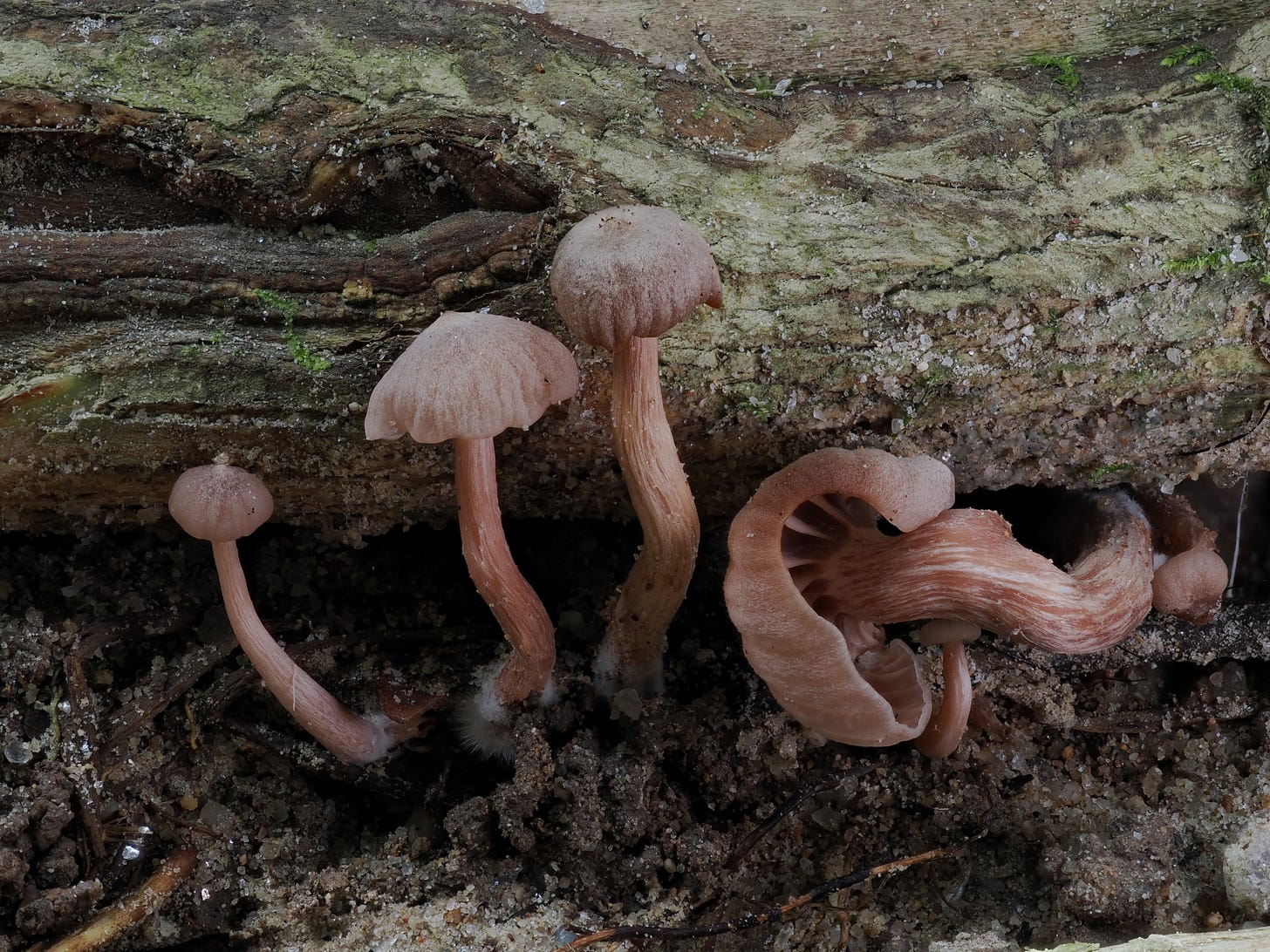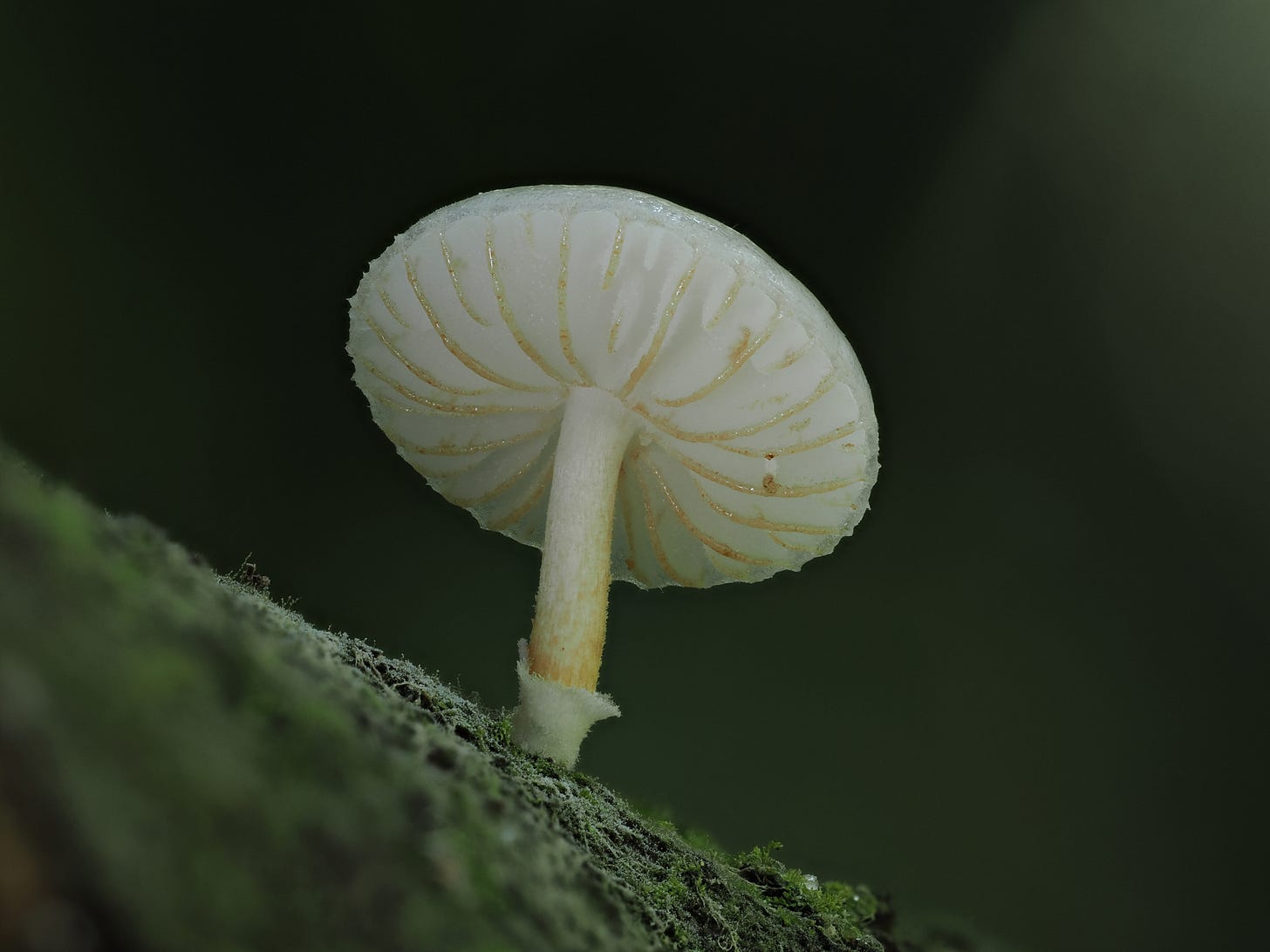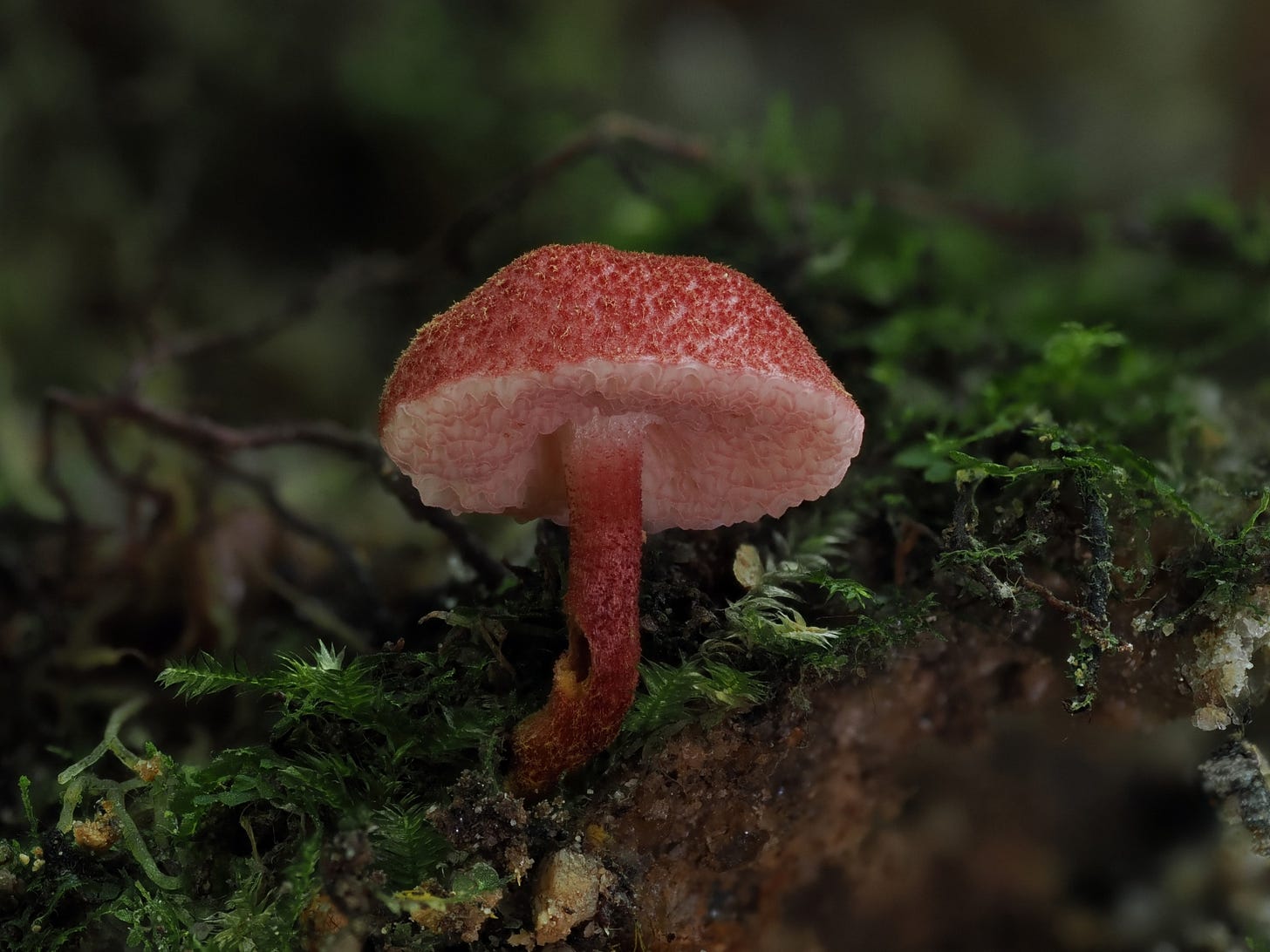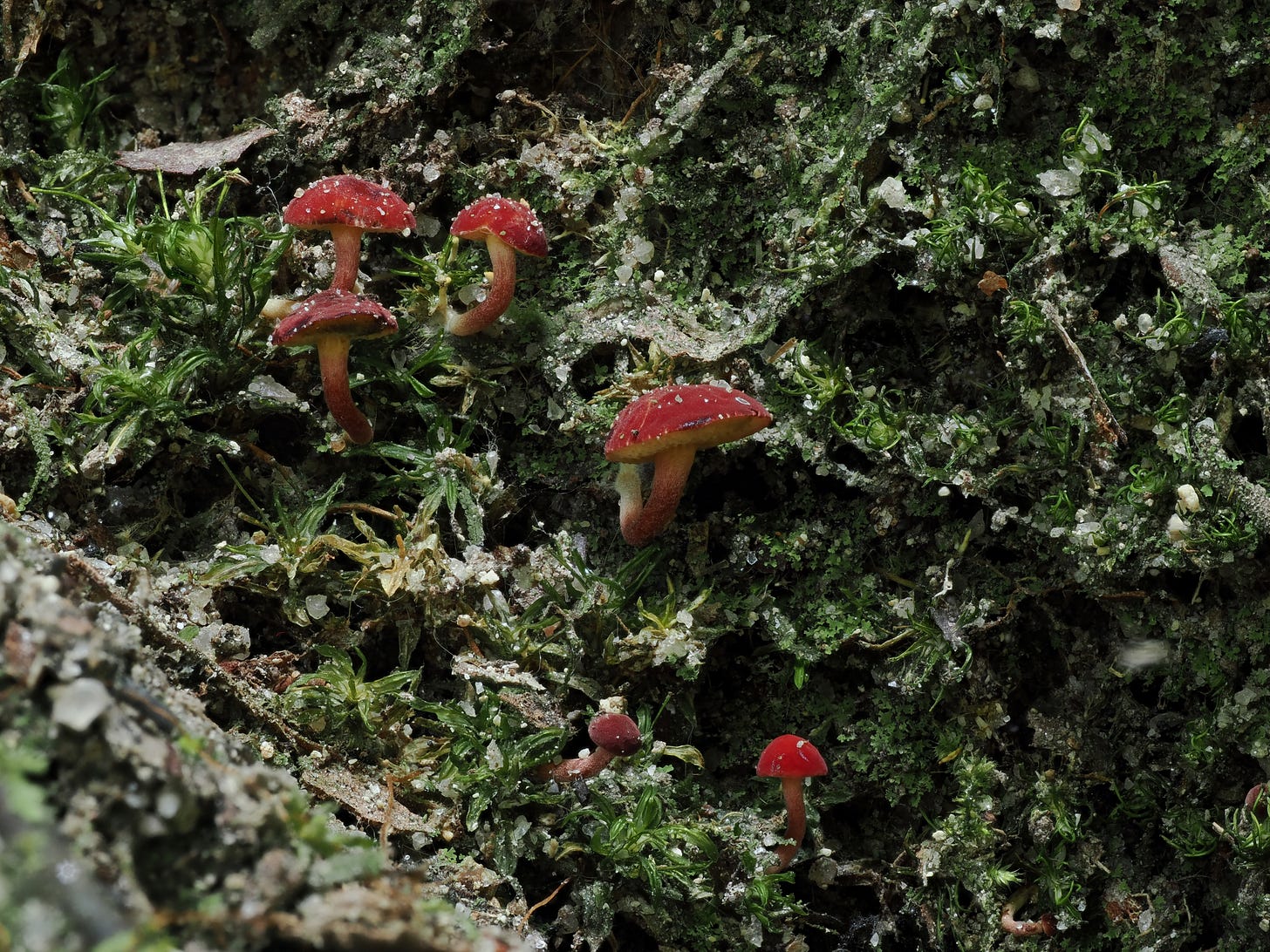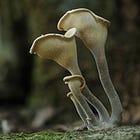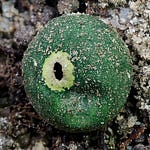Oct/Nov 2024
Tucked away just north of Kuala Lumpur, Sungai Tua Recreational Forest is a lush riverside retreat where cool waters weave through dense dipterocarp hill forest. I spent some time here with friends, wandering along shaded trails and uncovering its fungal diversity. Despite ongoing development pressures, this patch of greenery still hums with life—especially if you know where to look. Much appreciation to Gim Siew Tan for being my guide.
The early morning sunlight filtered through the canopy, casting an ethereal glow. GS pointed out a special log where clusters of white sticky-stiped Roridomyces grew. I managed to capture some bioluminescent shots—these were the brightest and most complete Roridomyces I’ve photographed, with the entire fruiting body glowing.


Along the track, I mistook what looked like discarded bicycle tire tread for rubbish—until it moved. A closer look revealed the tail end of a Malayan blue coral snake (Calliophis bivirgatus), its vivid colors unmistakable.
Sungai Tua teems with more than just fungi. Hammerhead worms, snails, lizards, ants, and monkeys made appearances throughout the day. But the real highlights were the fungi:


Some interesting Xanthagaricus sp. were found growing in soil next to a gazebo and picnic area. I found the cap pattern and edges to be the most unique.



I came across two tiny red boletes I’d previously seen at Sungai Congkak: Royoungia coccineinana and Parvixerocomus pseudoaokii. R. coccineinana has red-edged pores, a spongy white underside, and a rougher cap, while P. pseudoaokii has a smoother cap and a yellow underside.
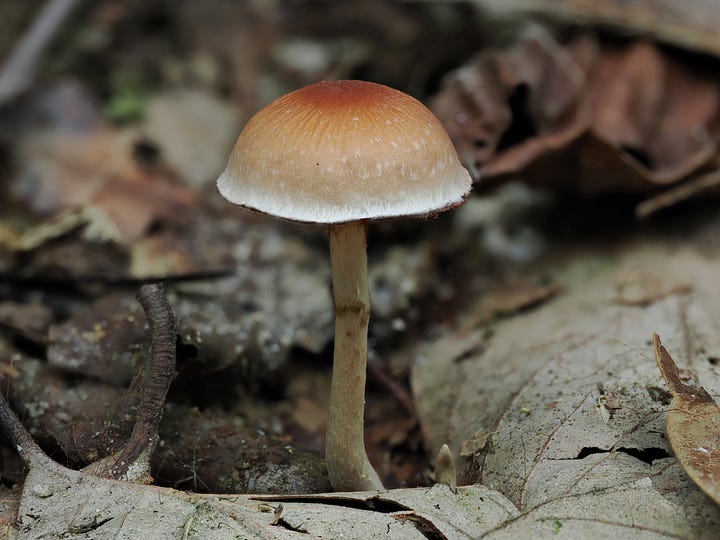

Several Phylloporus species were found beneath Shorea trees, their gills bruising blue—a clear sign of their link to Boletales. One of the day's best finds was a charcoal-colored Indoporus shoreae, fittingly growing right under a tree labeled Gerutu pasir (Parashorea densiflora).
Dark green wrinkly-capped Leotia sp. with bright yellow stipes stood out along the track.
Leotia, also known as jelly babies, is a genus of fungi found around the world. They have a soft, jelly-like texture and grow with a stalk and a rounded cap. Scientists believe they form beneficial relationships with trees (ectomycorrhizal).
They are related to Microglossum and were traditionally identified by color—tan (L. lubrica), olive-green (L. atrovirens), and green-headed with a yellow stalk (L. viscosa). However, recent studies show that color isn’t always a reliable way to tell them apart, so more research is needed.
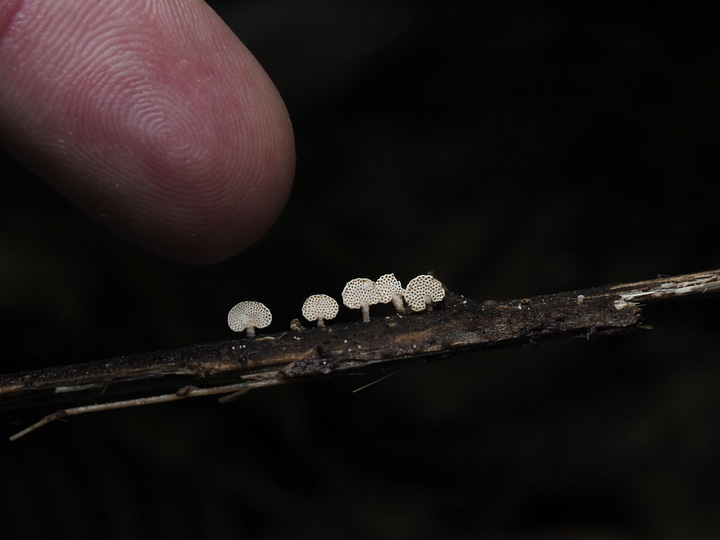
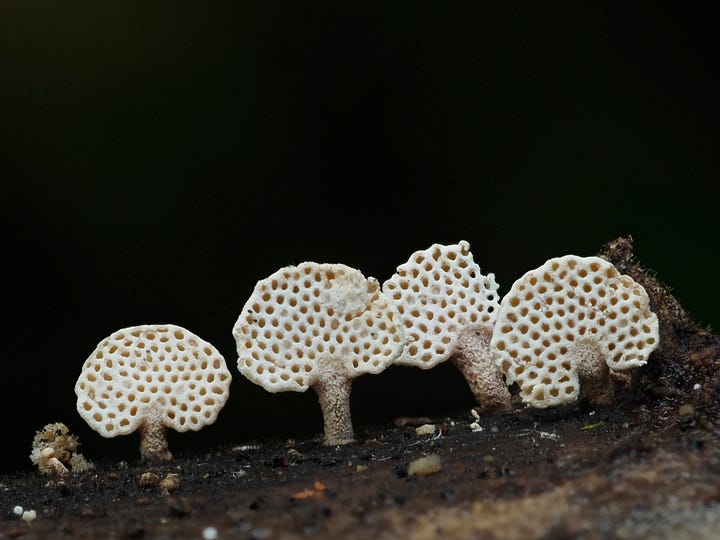


And to wrap up the foray, nothing could have been more fitting than spotting a Hygrocybe cf. astatogala in vivid orange, red, and black—just in time for Halloween.




